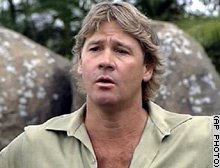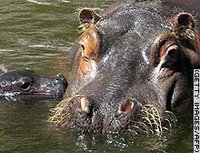The Platypus...Mammal or Bird? - by Paige

Hi, my name is Paige. I am 9 years old from Toledo, Ohio. I love animals and that is why I have made this webpage. To write about saving our animals of the world. You can comment but my Dad will be looking at everything before I can list it. I hope you enjoy my site. Please visit often!


Wolves are part of the dog family and mammals. Mammals have fur or hair, a backbone, a well developed brain, live babies, animal whose babies are fed milk from the mother's body, and is warm blooded.
Wolves have thick fur that covers their bodies. The fur is colored black, brown, gray, or white. They may have a maned head also they have strong legs, long and Strong jaws. Wolves can grow up to 3 1/2 feet long and can weigh up to 55 pound. They can run as fast as 30 miles an hour. Wolves live in forests, mountains or deserts in North America, Europe, Asia, grasslands, and in the arctic.
Wolves are carnivores which means they eat meat. They eat deer, elk, rabbits, ... but their favorite food is moose.
Wolves only have three enemies. They are people, other wolves, and bears.
Wolves have some cool facts about them. One of the coolest facts is that they can go without food for 3 or 4 days. Also a wolf's jaw is strong enough to crush bones.
I think wolves are really fascinating animals.
Labels: Wolves by Jedi Drew
 SYDNEY, Australia (CNN) -- Steve Irwin, the enthusiastic "Crocodile Hunter" who enthralled audiences around the world with his wildlife adventures, died Monday after being stung by a stingray while shooting a TV program off Australia's north coast.
SYDNEY, Australia (CNN) -- Steve Irwin, the enthusiastic "Crocodile Hunter" who enthralled audiences around the world with his wildlife adventures, died Monday after being stung by a stingray while shooting a TV program off Australia's north coast.

(GENEVA, Switzerland) --The World Conservation Union or IUCN (a leading environmental agency) added the Polar Bear and Hippo to its list of species which face extinction due to climate change and man-made dangers such as unregulated hunting.
 The Polar Bear was listed as “vulnerable” which is one step down from “endangered in the IUCN rankings, with predictions that the Polar Bear population could drop 30% in the next 45 years due to loss of habitat caused by melting ice caps.
The Polar Bear was listed as “vulnerable” which is one step down from “endangered in the IUCN rankings, with predictions that the Polar Bear population could drop 30% in the next 45 years due to loss of habitat caused by melting ice caps. The Hippo was also ranked as vulnerable because of a declined in it’s population in the Democratic Republic of Congo where unrestricted hunting caused a 95% decline in population since 1994. This is the first time the Hippo has been listed as threatened.
The Hippo was also ranked as vulnerable because of a declined in it’s population in the Democratic Republic of Congo where unrestricted hunting caused a 95% decline in population since 1994. This is the first time the Hippo has been listed as threatened.